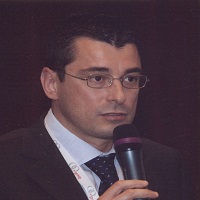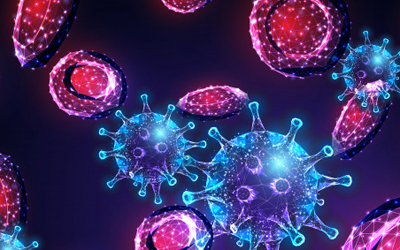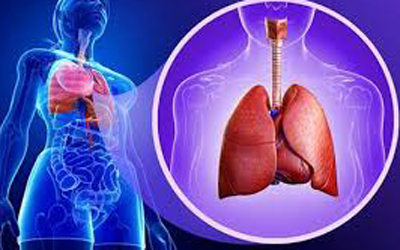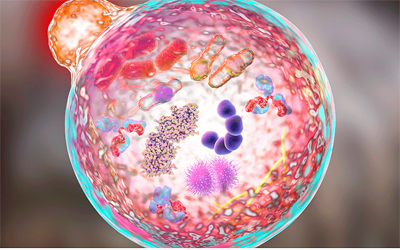Current Issue Articles
Review Article
A Theoretical and Numerical Analysis of the Axial Flow Fan with a Conical Hub, Guide Vanes and Rectifier Vanes
Song UP, Thak PJ, Nam OY, Pak HT, Kim RM and Choe HS
A Theoretical and Numerical Analysis of the Axial Flow Fan with a Conical Hub, Guide Vanes and Rectifier Vanes
Song UP, Thak PJ, Nam OY, Pak HT, Kim RM and Choe HS
Research Article
Highly Sensitive Liquid Crystal-Based Optical Biosensor for Quantitative Detection of Proteins
Fiorentini L, Barboza R, Logovatovskaya M, Rocchetti E, Mariani P and Lucchetti L
Highly Sensitive Liquid Crystal-Based Optical Biosensor for Quantitative Detection of Proteins
Fiorentini L, Barboza R, Logovatovskaya M, Rocchetti E, Mariani P and Lucchetti L
Research Article
Training the Future MLS Educators through the Doctorate in Clinical Laboratory Sciences: A Mixed-Methods Study
Rajendran R and Salazar J
Training the Future MLS Educators through the Doctorate in Clinical Laboratory Sciences: A Mixed-Methods Study
Rajendran R and Salazar J
Review Article
Real-Time Biometric Monitoring for Cognitive Workload Detection in High Demand Professions: A Narrative Review
Reginald B OHara*, Shelby C Loftis and Cynthia Rando
Real-Time Biometric Monitoring for Cognitive Workload Detection in High Demand Professions: A Narrative Review
Reginald B OHara*, Shelby C Loftis and Cynthia Rando
Research Article
Features of Vitamin D and Bone Metabolism in Patients with Cirrhosis of Non-Alcoholic and Non-Viral Etiology: Results of a Pilot Study
Gorbacheva AM, Spasskaya OY, Lavreniuk AA, Bibik EE, Tikhonov IN, Eremkina AK, Khairieva AA, Litvinova EE and Mokrysheva NG
Features of Vitamin D and Bone Metabolism in Patients with Cirrhosis of Non-Alcoholic and Non-Viral Etiology: Results of a Pilot Study
Gorbacheva AM, Spasskaya OY, Lavreniuk AA, Bibik EE, Tikhonov IN, Eremkina AK, Khairieva AA, Litvinova EE and Mokrysheva NG
Research Article
Effect of the Antioxidant Pharmacological Agent Mexidol on Locomotor Behavior in Rats Impaired by Silver Nanoparticles
Karpukhina OV, Inozemtsev AN and Kalinina IG
Effect of the Antioxidant Pharmacological Agent Mexidol on Locomotor Behavior in Rats Impaired by Silver Nanoparticles
Karpukhina OV, Inozemtsev AN and Kalinina IG
Review Article
Paternal Mental Health and it’s Influence on Parenting and Child Well-being in Sunyani West Municipality, Ghana: A Cross-Sectional Study
Dwaah PK, Awua-Boateng NY, Owusu P, Serwaa FO, Amissah P, Lumor P, Edze P, Ntow CAN
Paternal Mental Health and it’s Influence on Parenting and Child Well-being in Sunyani West Municipality, Ghana: A Cross-Sectional Study
Dwaah PK, Awua-Boateng NY, Owusu P, Serwaa FO, Amissah P, Lumor P, Edze P, Ntow CAN
Review Article
Exploring the Tumor Microenvironment: Macrophages and PD-1 Checkpoint Inhibitors
Liu X, Lu Y, Wei J, Liu H, Huang J, Ding Y
Exploring the Tumor Microenvironment: Macrophages and PD-1 Checkpoint Inhibitors
Liu X, Lu Y, Wei J, Liu H, Huang J, Ding Y
Research Article
Refluward® HA: Efficacy and Safety in Patients with Gastro-Esophageal Diseases
Mancheno Ferreras R, Di Maio U, Cerciello A
Refluward® HA: Efficacy and Safety in Patients with Gastro-Esophageal Diseases
Mancheno Ferreras R, Di Maio U, Cerciello A
Review Article
The Cellular Crosstalk between the Endothelial Cells and Immune Cells in the Metastasis of NSCLC
Wang J, Huang Y, Jin Y, Liu G
The Cellular Crosstalk between the Endothelial Cells and Immune Cells in the Metastasis of NSCLC
Wang J, Huang Y, Jin Y, Liu G
Relative Topics
- Current Research Study of gene therapy
- Free Scholarly Resources of Python for Bioinformatics
- Health Services Research in Molecular Medicine
- Clinical Investigations in Adverse Drug Reaction
- Articles Related to Quantitative Proteomics
- Research Scope of Analytical Biochemistry and Biophysics
- Journal Research Disciplines like Molecular Cloning
- Advanced Research Areas in Agronomy
- Advanced Research Areas in Proteomics Science
- Best Published Papers in Bryology
- Scientific Research on Polymerase Chain Reaction
- Scientific Papers on Biomolecules
- Clinical Investigations in Cell Biology
- Current Research Study of Drug Interactions
- Medical Case Reports on Clinical Drug Trials
- Largest Open Access Journal for Botany
- Top Molecular Biology Journals
- Academic Journals in molecular synthesis
Universities
- Ahi Evran University
- Tianjin Medical University
- A Veeriya Vandayar Memorial Sri Pushpam College
- Active Citizenship Network
- Addis Ababa Unversity
- Aga Khan University Hospital
- Agricultural Research Station
- Alberta University
- Alexandria University
- All Cosmos Bio-Tech (ACBT)
- Amity University
- Anhui Medical University
- Indira Gandhi National Open University
- Banaras Hindu University
- Baskent University
- Bunbury Regional Hospital
- Calcutta School of Tropical Medicine
- Central South University
- Centurion University of Technology and Management
- China Academy of Engineering Physics
- China Medical University
- China Three Gorges University
- Chongqing Medical University
- Cracow University
- Düzce University
- Defense Services Medical Academy
- Edo University
- Elda General University
- Erzincan Binali Yildırım University
- Federal University of Ceará
- Fisheries Research Institute
- Friedrich-Alexander University of Erlangen-Nürnberg
- Fudan University
- Fujairah Men’s College
- German University for Prevention and Health Management (DHfPG)
- Great Zimbabwe University
- Hainan Medical University
- Hakim Sabzevari University
- Hannover Medical School
- Hazara University
- Hôpital de Mercy1
- Health Sciences University
- Herzen State Pedagogical University of Russia
- Hokkaido University
- Hospital Pedro Hispano
- Huazhong University
- Hungarian University of Agriculture and Life Sciences
- Hyupsung University
- Inha University
- Intercultural University of Puebla State
- International Academy of Medical Sciences
- International Medical Sciences Academy
- International Medical University
- Islamic Azad University
- Jawaharlal Nehru University
- Jomo Kenyatta University of Agriculture and Technology
- Kahramanmaraş Sutçu Imam University
- Khalsa College
- King Saud University
- Kobe University
- Kyoto Prefectural University of Medicine
- Louisiana State University
- M.G. Safronov Yakut Scientific Research Institute of Agriculture
- M’Hamed Bougara University
- McMaster University
- Metropolitan Technological University
- Mianyang Teachers’ College
- Michigan State University
- Modern College of Business and Science
- National and Kapodistrian University of Athens
- National Research Council of Italy
- National University of Entre Rios
- Newham University Hospital
- Niculae Stă ncioiu” Heart Institute
- Noida Institute of Engineering & Technology
- Northern State Medical University
- Northwestern A&F University
- Paris-Sorbonne University
- Pokhara Academy of Health Sciences
- Private Siirt Hayat Hospital
- Rivers State University
- Rocky Mountain Research Institute
- Saint Petersburg State of Civil Aviation University
- Samsung Medical Center
- Sana’a University
- Sanjay Gandhi Postgraduate Institute of Medical Sciences
- Shahid Beheshti University of Medical Sciences
- Shandong University
- ShengJing Hospital of China Medical University
- Sher-E-Bangla Medical College Hospital
- Sher-e-Kashmir University of Agricultural Sciences and Technology
- Southwest University of Science and Technology
- Southwestern University of Finance and Economics
- Spectrum Health Medical Group
- St John of God Hospital
- State University of Campinas
- State University of Land Use Planning
- Stockton University
- Sungkyunkwan University
- Taif University
- Tanta University
- Tashkent Medical Academy
- Technical University of Denmark(DTU)
- Technical University of Kaiserslautern
- Tennessee State University
- The University of Texas Health Science Center at Houston
- Universidade da Madeira
- Universite Hassan Ii Casablanca; Morocco
- University Hospital San Juan de Alicante
- University Miguel Hernández de Elche
- University of Antilles
- University of Babylon
- University of Benin
- University of Bisha
- University of Blida
- University of Bojnord
- University of Calabar
- University of Cartagena
- University of Catania
- University of Chieti-Pescara
- University of Colombo
- University of Delaware
- University of Delhi
- University of Guilan
- University of Ibadan
- University of Kalyani
- University of Kentucky
- University of Kerala
- University of Khartoum
- University of La Sabana
- University of Marburg
- University of Massachusetts Boston
- University of Medical Sciences
- University of Medicine and Pharmacy
- University of Michigan
- University of Nottingham
- University of Padova
- University of Pennsylvania
- University of Punjab
- University of Sao Paulo
- University of Sargodha
- University of Science and Technology of China
- University of Strasbourg
- University of Tennessee Health Science Center
- University of Warmia and Mazury
- University of Western Australia
- University of Wolverhampton
- University of Zagreb
- University of Zambia
- University Putra Malaysia
- University Schleswig Holstein
- Usmanu Danfodiyo University
- Virginia State University
- Wichita State University
- Yıldırım Beyazıt University
- Zhengzhou University
Author Feedback
The journal (JBRES) works in a very professional manner. I especially appreciated their willingness to make corrections during proof processing and, also, if required, after publication. The Editorial Manager is very congenial and diplomatic.
















































































Review Article 2025-09-11
Candida, the Gut Microbiome, and the Epidemic Levels of Cancer and Autoimmune Disease in Young Women, Dementia, and Obesity
Descriptive Research 2025-08-14
HMPV in Focus: Emerging Insights into a Silent Respiratory Threat
Research Article 2025-08-25
Development of a Fluorescence Isothermal Recombinase Polymerase Amplification Assay for Rapid Detection of Feline Calicivirus
Case Report 2025-01-31
Bordetella bronchiseptica Infection in an Immunocompetent Adult and a Literature Review on this Rare Zoonosis
Case Study 2025-01-31
Detection of an Imported Case of Severe Crimean-Congo Hemorrhagic Fever in a Patient with Comorbidities, Dakar, Senegal 2023
Descriptive Research 2024-10-25
Application of UV-C Technology in Managing the Monkeypox Epidemic: Surface, Air, and PPE Decontamination
Research Article 2024-09-20
Occult Hepatitis C Infection in Kidney Transplant and Hemodialysis Patients Identified five to Eight Years after Sustained Virological Response
Research Article 2024-08-08
Genetic Identification of EBNA1 Gene in Cases of Infectious Mononucleosis (IM) in the Metropolitan Region of Belem, Para, Brazil
Short Communication 2024-06-14
Return to a Warmer Climate of the Middle Pliocene will Boost Bacterial, Viral and Protozoan Parasite Pathogen Induced Diseases
Research Article 2024-05-23
Serological Diagnosis and Molecular Detection of Varicella Zoster Virus in Patients with Suspected Meningoencephalitis
Original Article 2024-02-03
One-Year Investigation of Hepatitis A Virus and Rotavirus in Two Waste Water Treatment Plants in Egypt
Review Article 2023-10-31
Review on Pest Des Petits Ruminants Virus and its Socioeconomic Impact in Small Ruminants
Review Article 2023-10-11
Diversity of Non-Influenza Respiratory Viruses Associated with Influenza-Like Illness during 2009 pre and pandemic periods in Sao Paulo, Brazil, a Historical Overview
Research Article 2023-06-16
Development of a New Anti-Rabies Antiviral: Effective Treatment with Beclin-1 and Lifespan Prolongation
Mini Review 2022-12-30
Philosophy of Science and Scientific Knowledge both Help to Solve Problems in Viral Taxonomy
Research Article 2022-10-27
Tick-Borne Pathogens Anaplasma phagocytophilum, Babesia odocoilei, and Borrelia burgdorferi Sensu Lato in Blacklegged Ticks Widespread across Eastern Canada
Review Article 2022-10-17
Risk of Fractures in Older Adults Living with HIV
Research Highlights 2022-06-30
Development of a Novel Anti-SARS-CoV-2 Antiviral: Effective Inhibitory Activity of Brilacidin
Review Article 2022-05-21
Cordyceps More Than Edible Mushroom-A Rich Source of Diverse Bioactive Metabolites with Huge Medicinal Benefits
Research Article 2022-05-10
COVID-19 Vaccination Status in Bogura District in Bangladesh
Opinion 2022-04-30
Possible Correlations between the COVID-19 mRNA Vaccine and Contracting Myocarditis/Pericarditis in Young Adults
Research Article 2022-03-17
The Role of School Engagement in Increasing Vaccination During Measles Mass Vaccination Campaign in Nigeria, 2018: The Lagos State Experience
Review Article 2022-02-24
Lichens Uses Surprising Uses of Lichens that Improve Human Life
Short Communication 2022-01-29
The Truth about mRNA Vaccines
Research Article 2022-01-17
Current Knowledge and Awareness of Dengue Fever among Students of Government College University Faisalabad
Review Article 2022-01-12
Mating Behavior and Gonotrophic Cycle in Anopheles gambiae Complex and their Significance in Vector Competence and Malaria Vector Control
Research Article 2021-12-29
Administration of HeberFERON in Patients with Persistent Oropharyngeal SARS-CoV-2 Wuhan/D614G Strain Viral Shedding
Original Article 2021-12-24
Prevalence of Cytomegalovirus, Rubella and Toxoplasma gondii among Internally Displaced Women of District North Waziristan, Pakistan with Home Obstetric History
Mini Review 2021-12-20
Immune Response towards COVID-19
Research Article 2021-11-23
Virtual Screening of Phytochemicals Targeting the Main Protease and Spike Protein of SARS-CoV-2: An In silico Approach
Research Article 2021-10-30
Antimicrobial Spectrum, Growth/Killing Kinetics, Conventional/Molecular Assay of Characterizing Non-Leguminous Endophytic Bacteria and Fungi from Helianthus annuus, Carica papaya and Lycoperesicum solanum
Research Article 2021-10-20
Accuracy of Roche SARS-CoV-2 Rapid Antigen Test in Nasopharyngeal Swab: Clinical Impression Matters
Original Article 2021-10-13
The Moderated Mediation Role of Malaria Knowledge and Household Income in the Relationship between Insecticide-Treated Mosquito Nets and Malaria
Original Article 2021-09-10
Susceptibility Pattern of Bacterial Isolates from Dental Caries Patients Attending Clinic at Irrua Specialist Teaching Hospital, Irrua, Nigeria
Case Report 2021-08-06
Venom Induced Toxic Ventriculitis Resulting in Acute Reversible Communicating Internal Hydrocephalus, Acute Pituitary Haemorrhage, Acute Hypopituitarism, Acute Kidney Injury, Septicaemia, Cellulitis and DIC Due to Viper Bite in a Young Farmer: A Case Report
Editorial 2021-07-24
Air Pollution COVID-19 and Forensic Implications
Mini Review 2021-05-27
Cell, Time and Knowledge: Some Conjectures
Research Article 2021-05-26
Effect of Positional Isomerism on Some Alcohol Based Drug towards Anti-Viral Activity against SARS-Cov-2: A Molecular Modeling Based Investigation
Mini Review 2021-05-21
Basic Knowledge on Leprosy: A Short Review
Mini Review 2021-04-22
Current Stem Cell Research Status on Hepatic and Pulmonary Sclerosis in COVID-19
Research Article 2020-12-16
Sampling and Characterization of the Environmental Fungi in the Provincial Historic Archive of Pinar Del Río, Cuba
Letter to Editor 2020-11-18
Use of Polio Vaccine Salk vs SARS- CoV-2E and HIV-1E 2, both as Therapeutic Drug and Effective Vaccine to Make Memory-Cells Able to Stop Reinfections
Review Article 2020-11-12
Sex and Age Differences in Telomere Length and Susceptibility to COVID-19
Research Article 2020-10-26
In silico Screening of Approved Drugs to Describe Novel E. coli DNA Gyrase A Antagonists
Review Article 2020-10-14
Remdesivir Research Progress: An Overview of the Emerging Evidence
Research Article 2020-09-10
Primary Prevention of New Pandemic and Biomimetic-Based Adaptation to Situation Connected with COVID-19 Pandemic
Review Article 2020-08-13
A Review: Artemisinin-Based Combination Therapies [ACTs] and K13 Polymorphism
Review Article 2020-08-12
Covid-19 Pandemic-Insights and Challenges
Short Communication 2020-07-02
The Hypothetical Role of Erythrocytes in COVID-19: Immediate Clinical Therapy
Research Article 2020-06-17
Determination of an Antiviral Activity of a Composition Comprising Glutathione Reductase (GSSG-R) and Oxidized Glutathione (GSSG) for Pharmaceutical use: Experiments In vitro and In vivo